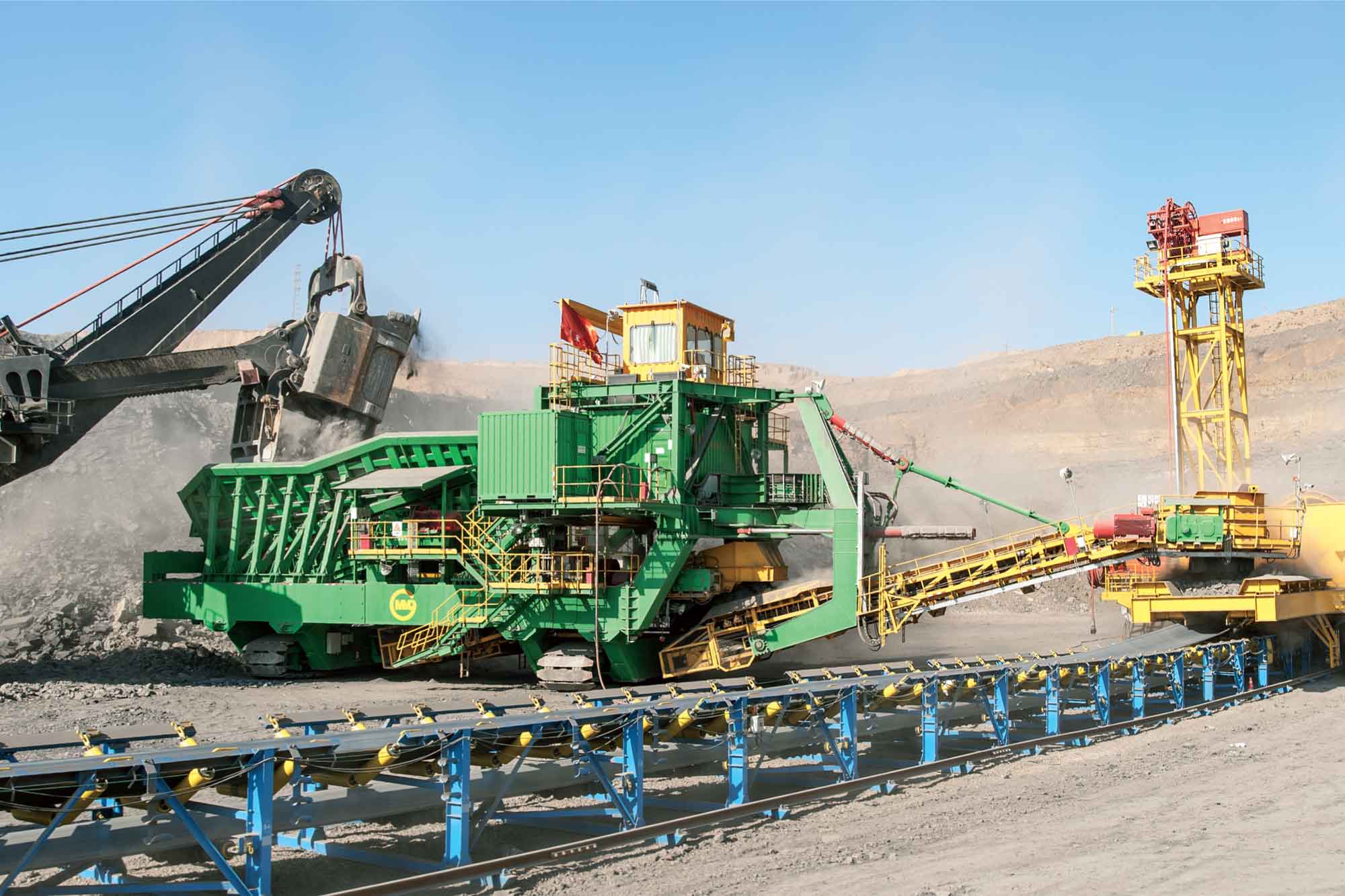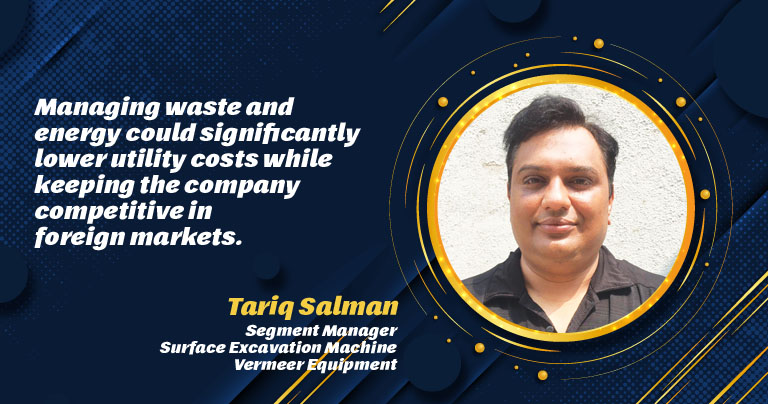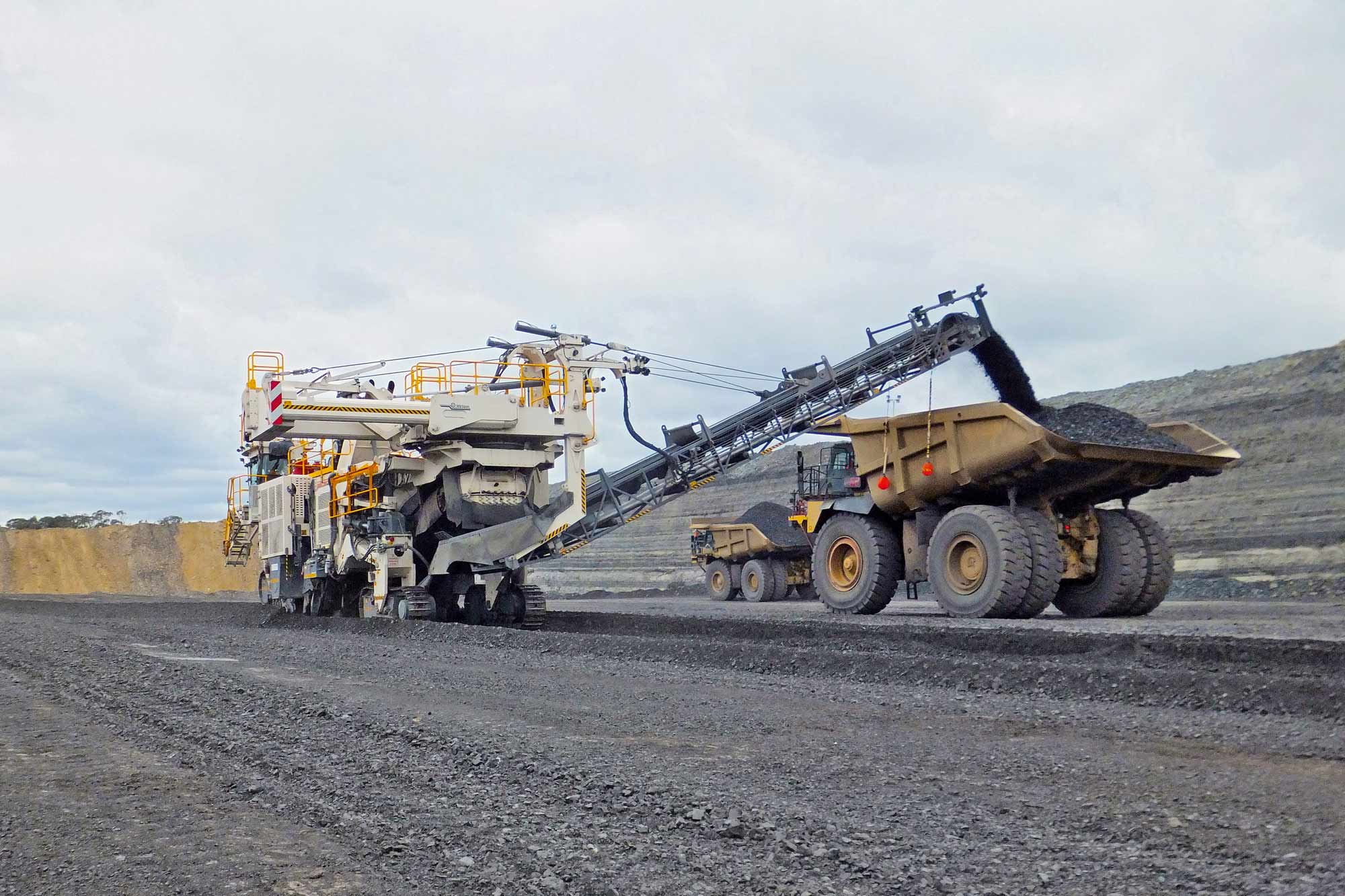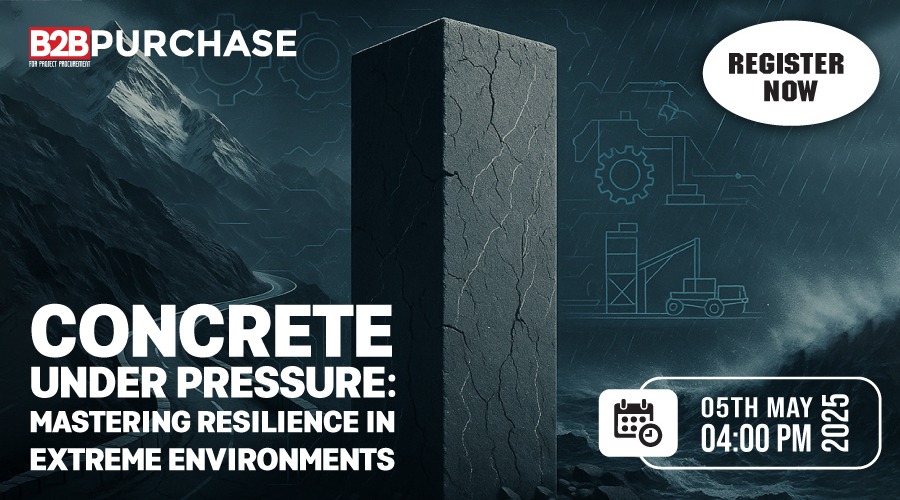“Preference should be given on technology”
By Edit Team | July 22, 2017 7:28 am SHARE

The MMD group of companies is a world leading specialist in the processing and reducing of natural and manufactured minerals using Sizer technology Subhajit Chaudhuri, Vice President, MMD Heavy Machinery (India) Pvt Ltd illustrates how technology is transforming the mining sector.
Minerals constitute the backbone of economic growth of any nation and India has been eminently endowed with this gift of na¬ture. The mining industry in India is a major economic activity which contributes significantly to the economy of India. The GDP contribution of the mining industry varies from 2.2 per cent to 2.5 per cent only but going by the GDP of the total industrial sector it contributes around 10 per cent to 11 per cent. Even mining done on small scale contributes 6 per cent to the entire cost of mineral production. India is rich in the resources of minerals like coal, iron ore, bauxite, manganese, baryte etc.
India produces as many as 87 minerals, which includes 4 fuel minerals, 10 metallic minerals, 47 non-metallic minerals, 3 atomic minerals and 23 minor minerals (including building and other materials).
Despite India’s significant geological potential, the country does not rank very high in terms of its mineral resource base amongst similarly geological endowed nations. There is significant mineral potential that still lay untapped in India for the growth of mining but historically, mining sector has struggled to exploit the potential due to some factors including regulatory and administrative procedures, inadequate infrastructure facilities and sustainability, proper technology. In-Pit Sizing and Conveying (IPSC) systems are a cost-effective and safer alternative to discontinuous material haulage by dump trucks; reducing operating costs, improving safety, and reducing CO2 emissions, dust, and noise pollution. Mining activity in any area impacts the environment as well as the socio-economic set-up. Therefore, ensuring that the adverse impacts are minimised and the benefits from mining to the impacted community are optimised becomes critical for mining to be being carried out in a sustainable manner.
Mining industry in India has been progressing at an annual rate of 4 per cent to 5 per cent during the last three decades. It is time for mineral development and mining to be given its long over-due recognition as a core industry as is the case in developed countries such as Australia, Canada and USA. Emphasis should be given on exploration to continuously augment the resource or reserve base of the country and harness the existing resources through scientific and sustainable mining including beneficiation technologies and focusing on zero waste mining. The mining industry has faced volatility in commodity prices in the recent past with several minerals showing a continued downward trend.
The outlook for the next six months does not appear optimistic either. This has led to pressures on margins and a renewed focus on performance improvement and cost efficiencies. About 92 per cent of coal production is from opencast mining. Iron ore is almost entirely mined from surface mining methods as largely are bauxite, limestone and several other major minerals and most minor minerals. A trend in mining technology has also been towards addressing the concerns of climate change and hence, reducing carbon footprints. Usage of more energy-efficient equipment and reduction in consumption of diesel are attempts in the right direction.
Given the uncertainties in commodity markets and prices, mining companies need to consider flexibility of operations in their strategic mine planning. It essentially means being able to scale up or down production from mines depending upon the demand and pricing. Such flexibility in mining operations has a significant impact on selection of technology and equipment. The penetration of technology for production planning and operational scheduling is still lower in India compared with global usages. Indian mining operations, even today, are still very conventional with limited application of modern technology. There is greater need for flexibility in strategic planning and hence, the adoption of new technologies available is inevitable. Technologies for efficient production are available globally but they need investments in adaptation for Indian geological conditions.
One of the key challenges in technology adoption in India has been focus on short-term costs versus longer term realisation of benefits. The new technologies, from mining methods to equipment to automation, need initial investments and they provide return on investments in varying lengths of payback periods. But essence of technology adoption is patience. The trends towards greater application of continuous mining systems, larger sized equipment and greater energy efficient systems are sure to continue, automation is likely to become a more spectacular change in India in the medium term.
Transporting ore and waste in the most economic, efficient and environmentally friendly way is critical to the operation of any open-pit mine. Operational costs, employee safety and CO2 emissions are challenges faced by most mines and quarries today. In-pit sizing and conveying (IPSC) is an alternative transport system which requires a higher initial investment but gives substantial saving in operating cost. IPSC is the proven technology for large open pit mines with high outputs and the preference should be given to the proven technology.
The last three years have been a transition phase for the Indian mineral sector, with major policy changes happening to overhaul the entire sector. The slew changes started with the restoration of coal allocation policies followed by changes in the allocation policies of other major minerals. The focus now is not only on efficient allocation of resources but also on timely development and production. These changes, especially in the coal sector, have redrafted the mineral sector landscape in the country. The movement in the global commodity markets have further added to the intensity of these changes and dynamism of the demand-supply equilibrium.
Given the various policy developments in domestic coal sources and global turmoil in the coal market, the demand supply dynamics in the country is expected to undergo a great degree of change and variation as compared to its historical establishment, as coal consumers see more options now.
India’s infrastructure industry has the biggest potential for growth. It has been noticed that the construction industry is on the rise and this would have a significant impact on the crushing equipment. We foresee a robust growth in equipment purchase with announcement of the allocation of coal blocks, auction of coal linkages for both power and non-regulated sectors, announcement of other minerals for commercial mining.
India is a price sensitive country but we must understand and give priority on “Life Cycle Cost” where in a better quality and support associated with a Brand results in better reliability, higher production and improved quality of finished products which results in a better earning potential for the end users.
Mining Machinery Developments (MMD) is a world-leader in the design, manufacture and supply of mineral processing solutions and associated machinery serving the mining, quarrying and recycling industries. For almost 40 years, the company has delivered innovative solutions that improve the productivity, profitability and safety of its customers’ operations while minimising environmental impact. MMD works closely with its customers offering comprehensive support through an expanding global network of offices and manufacturing facilities, employing over 500 dedicated and experienced professionals.
Sizer technology is the latest innovation in the crushing industry providing a compact and efficient way of comminution, both in underground and open pit operations. Currently, MMD processes over 80 different minerals in more than 70 countries worldwide for primary, secondary or tertiary crushing operations.
MMD has throughout its existence developed purpose designed units to suit any mining method and material as required. The whole range of Sizers can be incorporated into a wide range of transport options available to suit the duties required. MMD is the innovator of the product which allows the flexibility of a mining shovel to be matched with the cost effectiveness of long distance conveyor haulage.
The 10,000 TPH Fully Mobile Sizer Station is a cost-effective engineering solution, which enables excavating, sizing and conveyor haulage process to take place in unison, along the mine face, advancing as it progresses. An obvious advantage of this system is the elimination of haul trucks in a truck and shovel operation. The Fully Mobile Sizer Station has many
attributes and features to enable consistent efficient operation of the complete system.
Global mining is changing rapidly: rising costs, environmental pressures and health and safety have called time on traditional truck and shovel methods. As the industry becomes increasingly aware of the need for “Sustainable Mining”, the ecological benefits derived from the elimination of dust and reduction of harmful greenhouse emissions caused by truck and shovel methods are self-evident. MMD’s innovative technology is at the forefront of this revolution.
For the ultimate in cost savings, environmental mining and portability, fully mobile Sizer units (fully mobile IPSC) enable the use of efficient conveyor haulage directly from the mine face. They move frequently to work directly with the excavator, whilst sizing and delivering conveyable material onto the conveyor haulage system, eliminating trucks and their associated costs, safety risks and environmental impact. MMD has, throughout its existence, developed purpose designed mobile units to suit any mining method and material. The whole range of Sizers can be incorporated into a wide range of transport options available to suit the duties and throughput required.
Through the use of the well established components such as the twin shaft Sizer and heavy duty apron plate feeder, MMD Fully Mobile units deliver the reliability and robustness required for IPSC operations. Further features or benefits include the followings:
• Throughput capacities up to and over 10,000TPH
• Automated material handling
• Low carbon emissions and environmental impact by using all electrical power
• Operates in extreme weather conditions
• Maintenance friendly.
MMD has been producing Semi-mobile IPSC units since the early 1980’s. Generally fed by a small fleet of trucks transporting material short distances from the mine face. The Sizer unit reduces material in preparation for efficient conveyor haulage out of the mine. As the mining face progresses these units are relocated occasionally to minimise the truck haulage distance. Semi-mobile sizer units leverage the flexibility of truck haulage together with the efficiency of conveyor haulage. This provides the ideal efficient solution for many mining scenarios where mining flexibility is vital, such as selective mining (blending), heavily faulted seams or irregular shaped ore bodies. Semi-mobile units are constructed in easy-to-assemble modules that can be relocated closer to the mine face by the MMD Atlas Transporter. Through the use of the well established components such as the twin shaft Sizer and heavy-duty apron plate feeder, MMD Semi Mobile units deliver the reliability and robustness required for IPSC operations.
Authored by__
Subhajit Chaudhuri,
Vice President,
MMD Heavy Machinery (India) Pvt Ltd
Cookie Consent
We use cookies to personalize your experience. By continuing to visit this website you agree to our Terms & Conditions, Privacy Policy and Cookie Policy.





































-20240213125207.png)

























